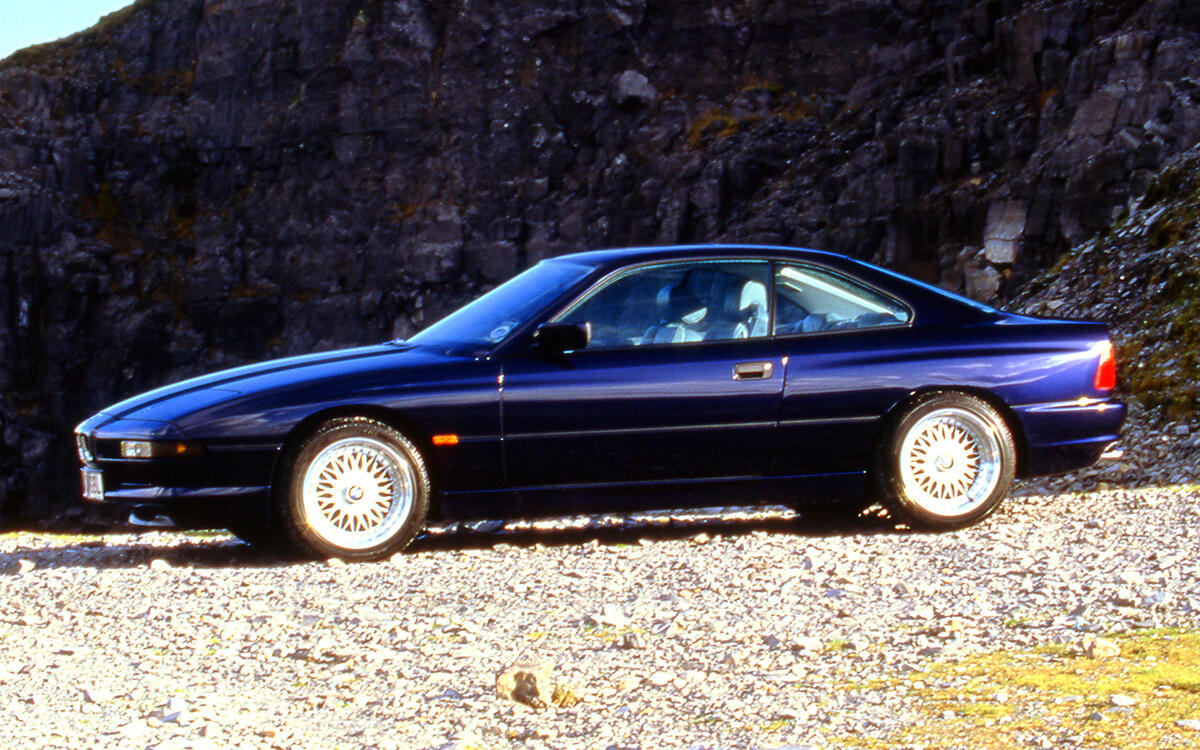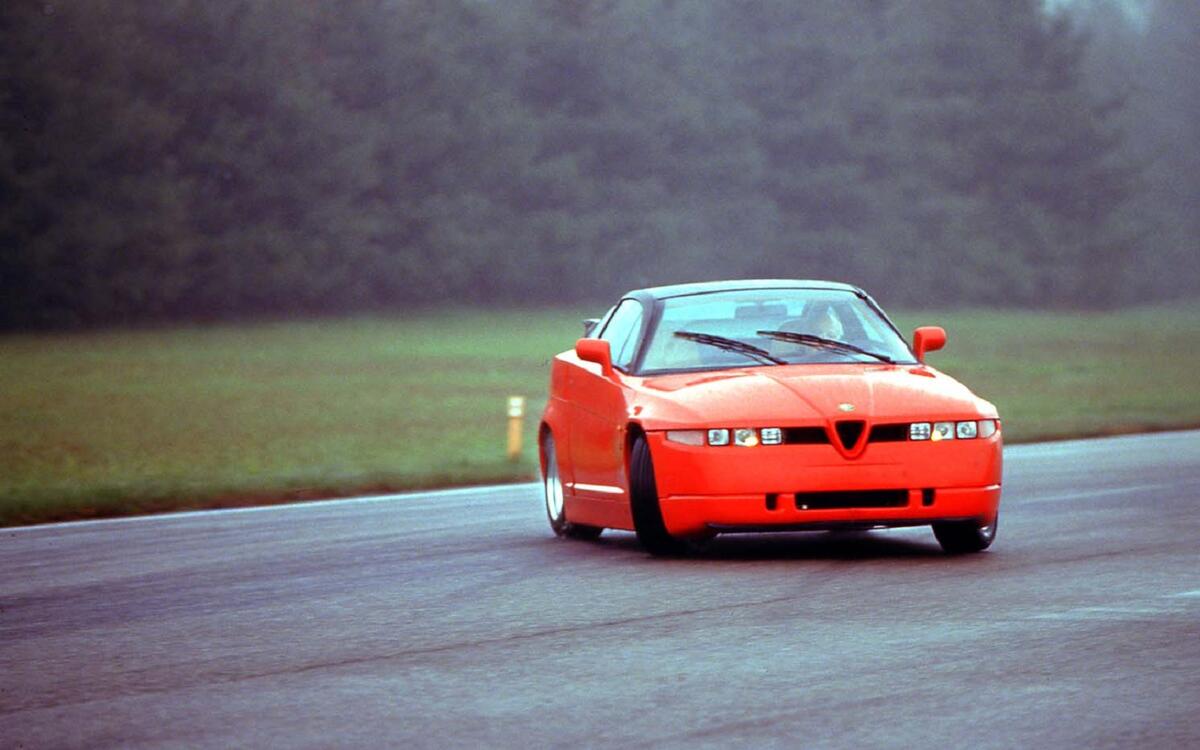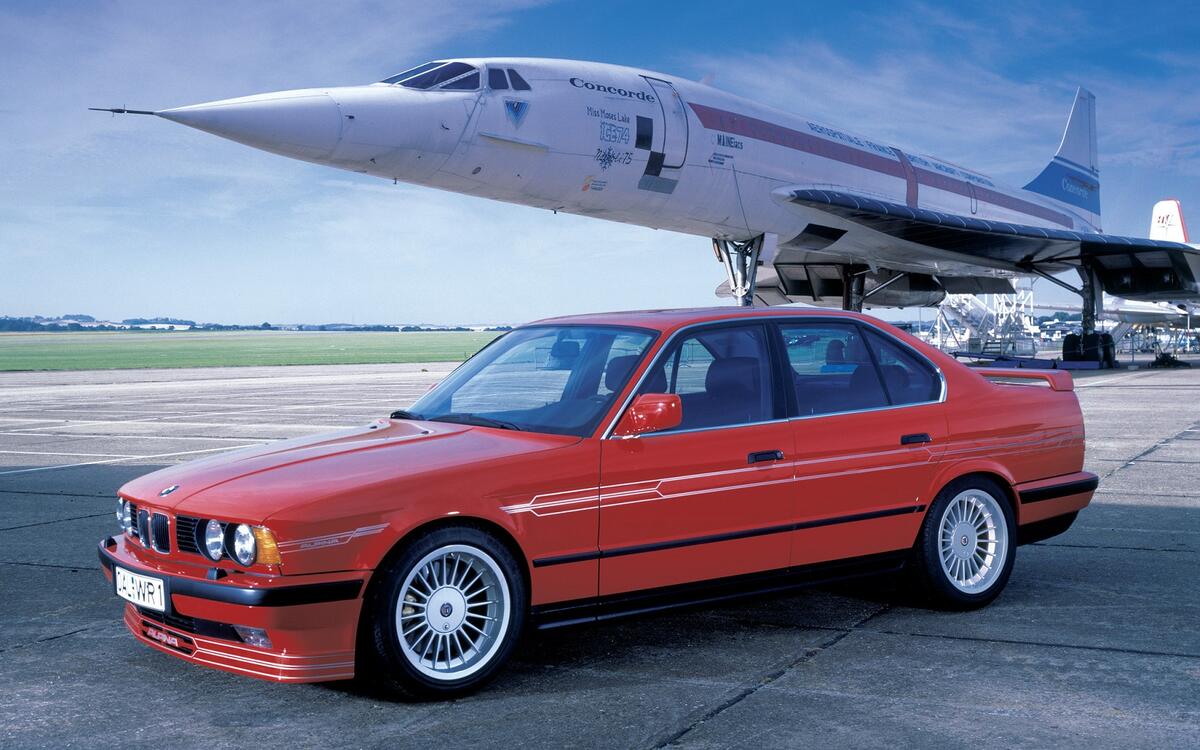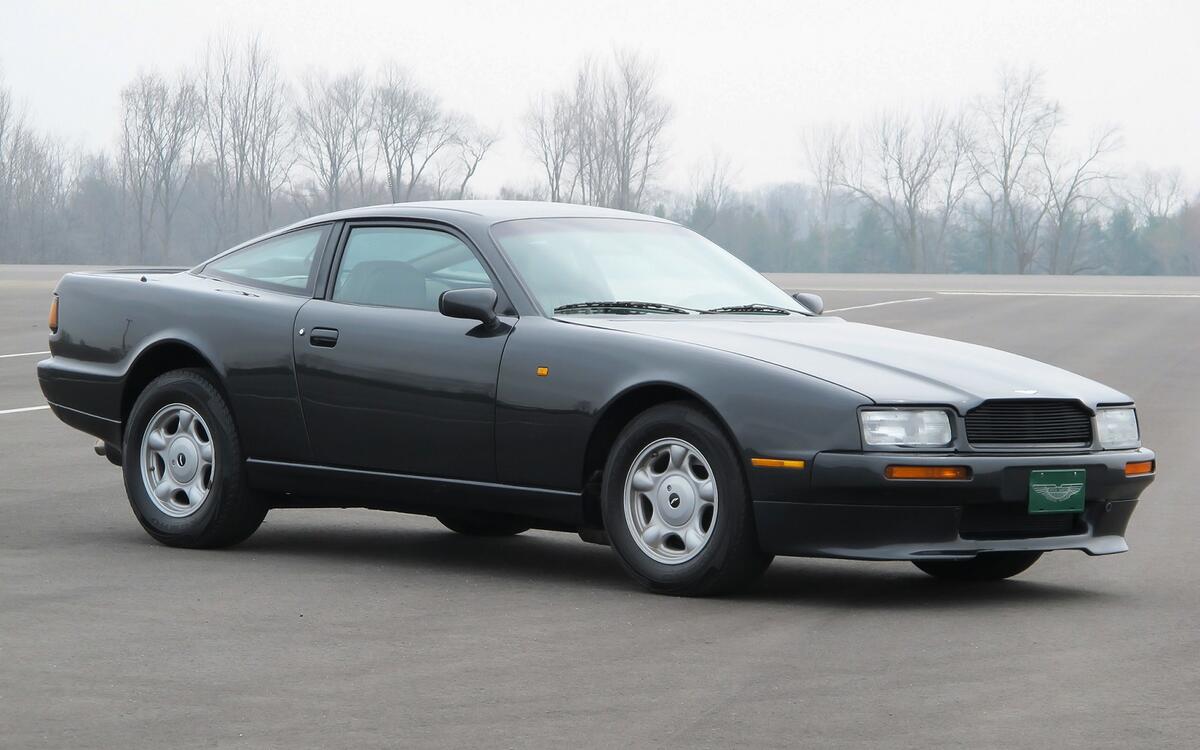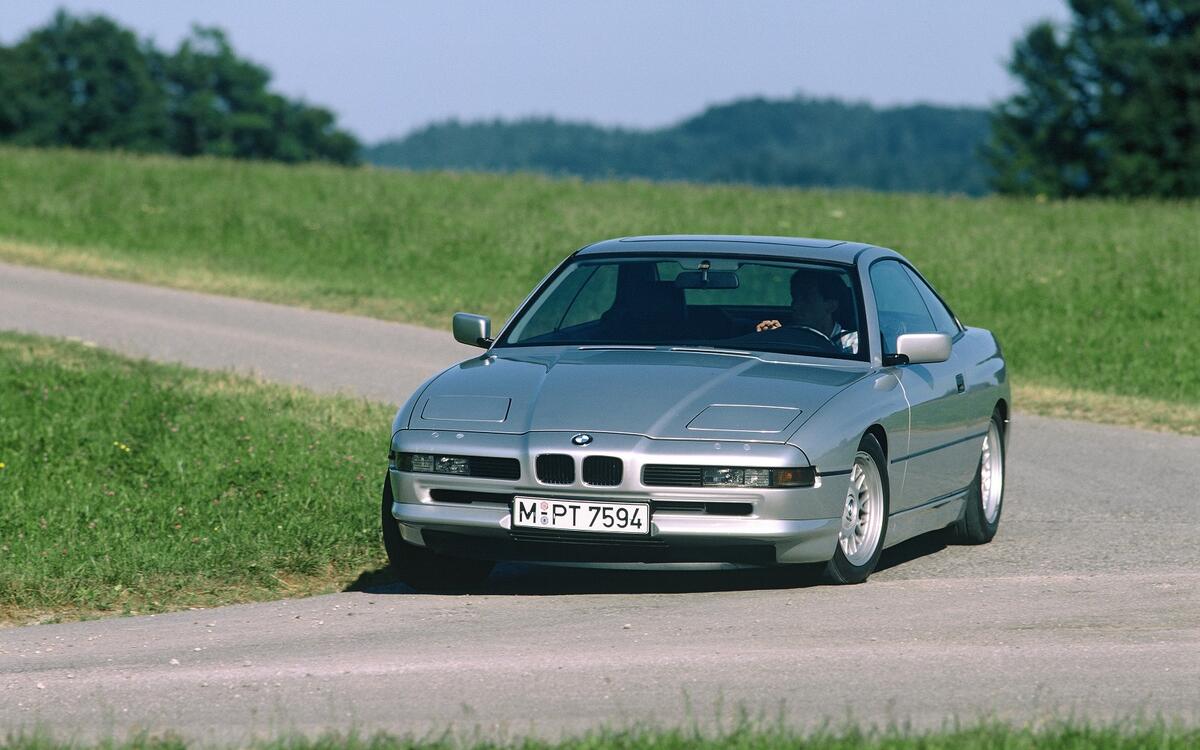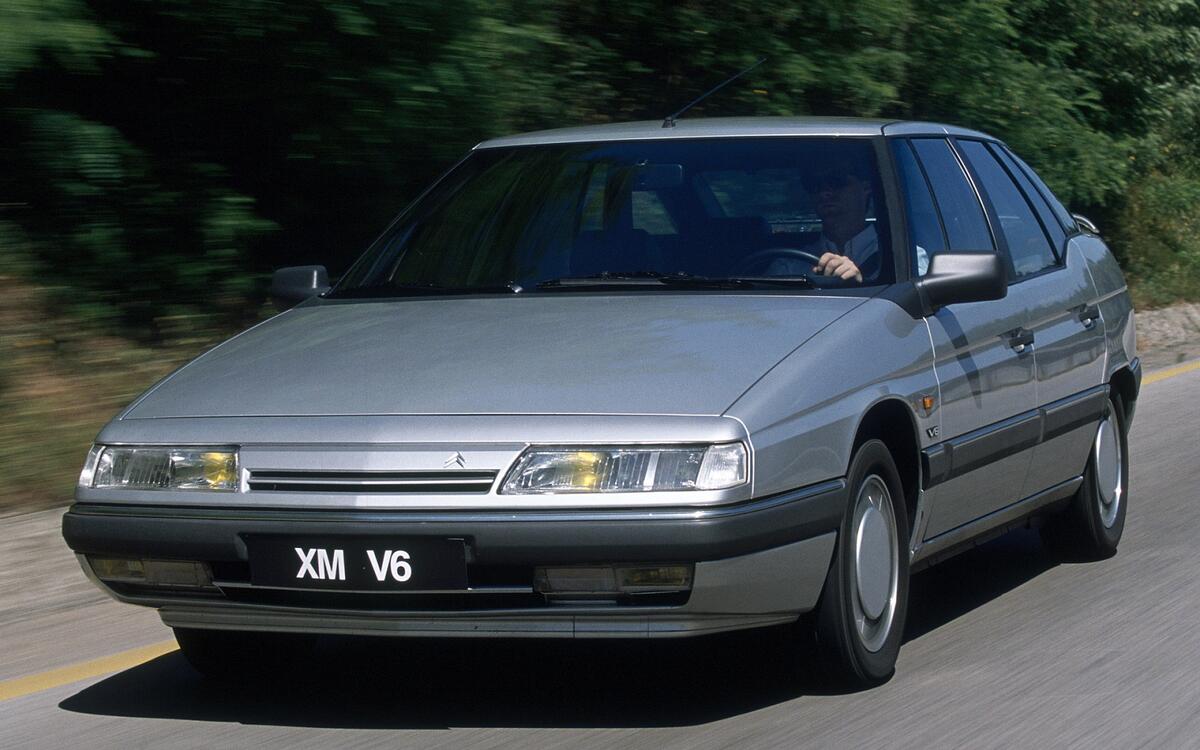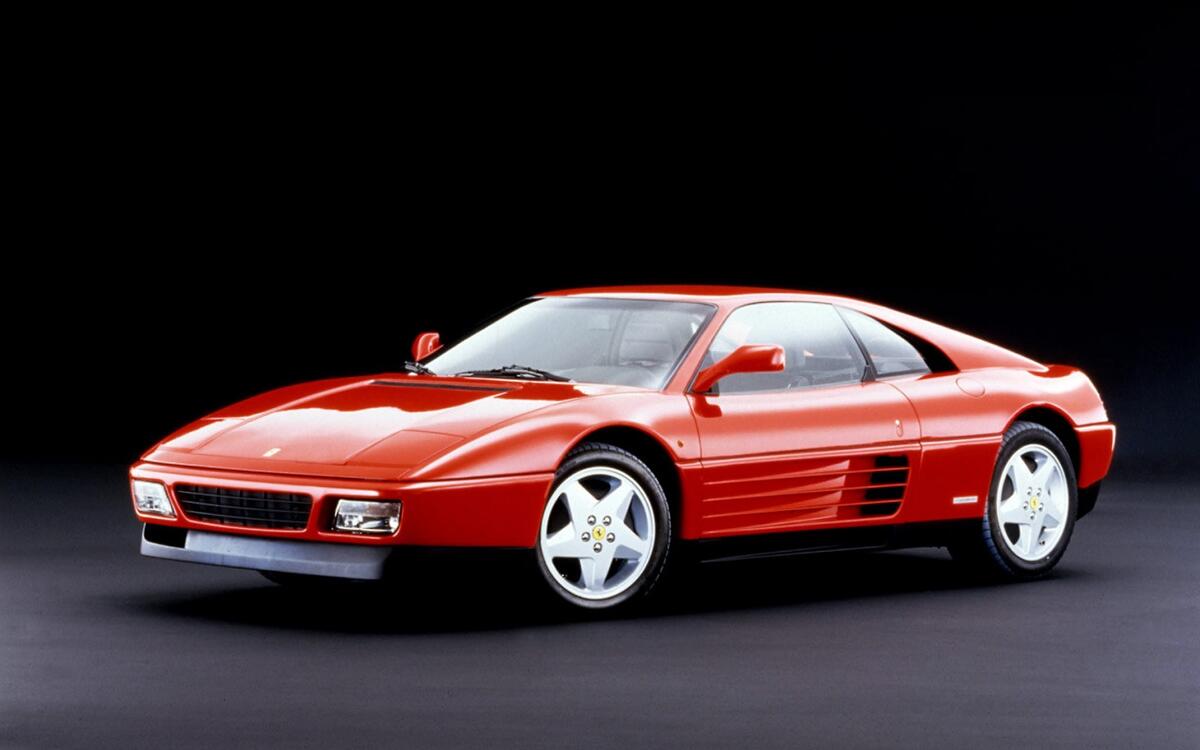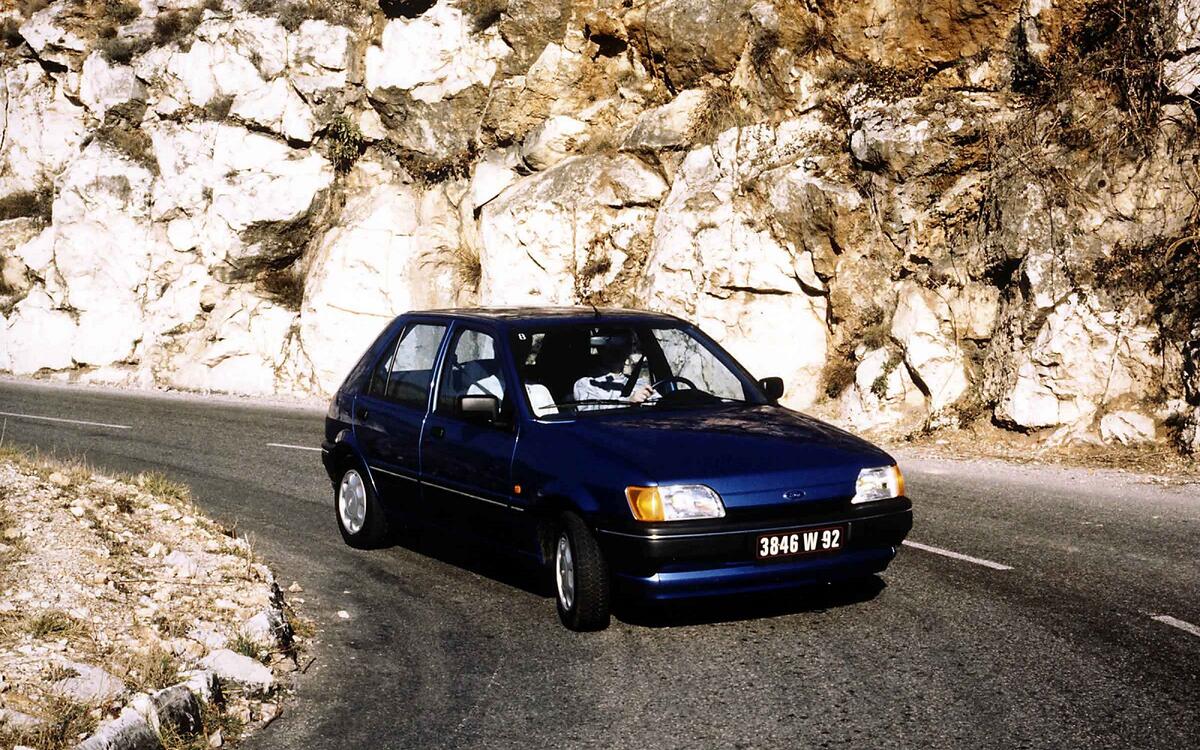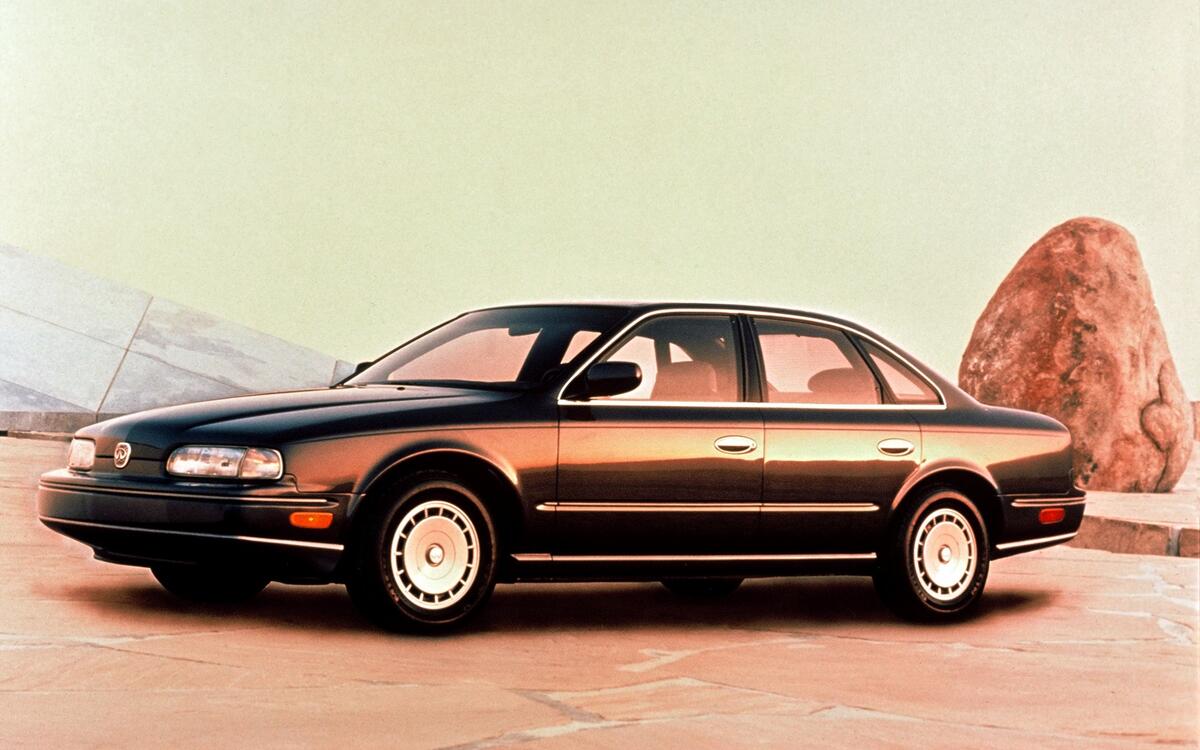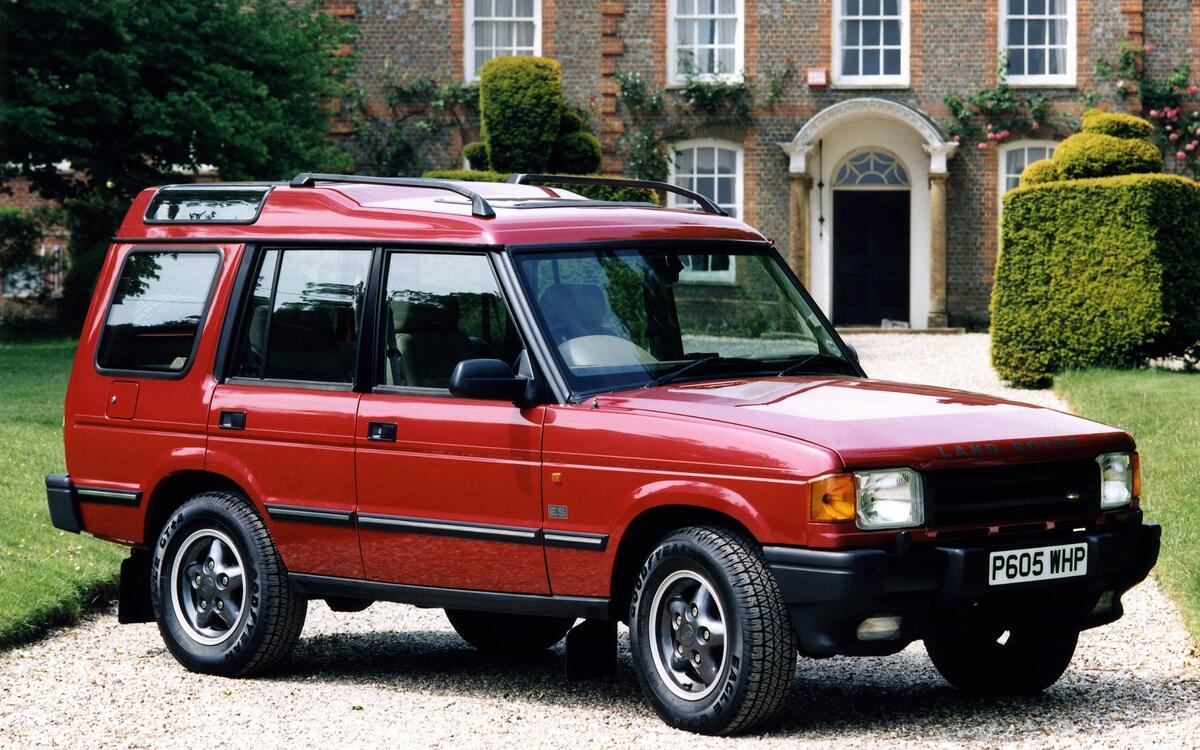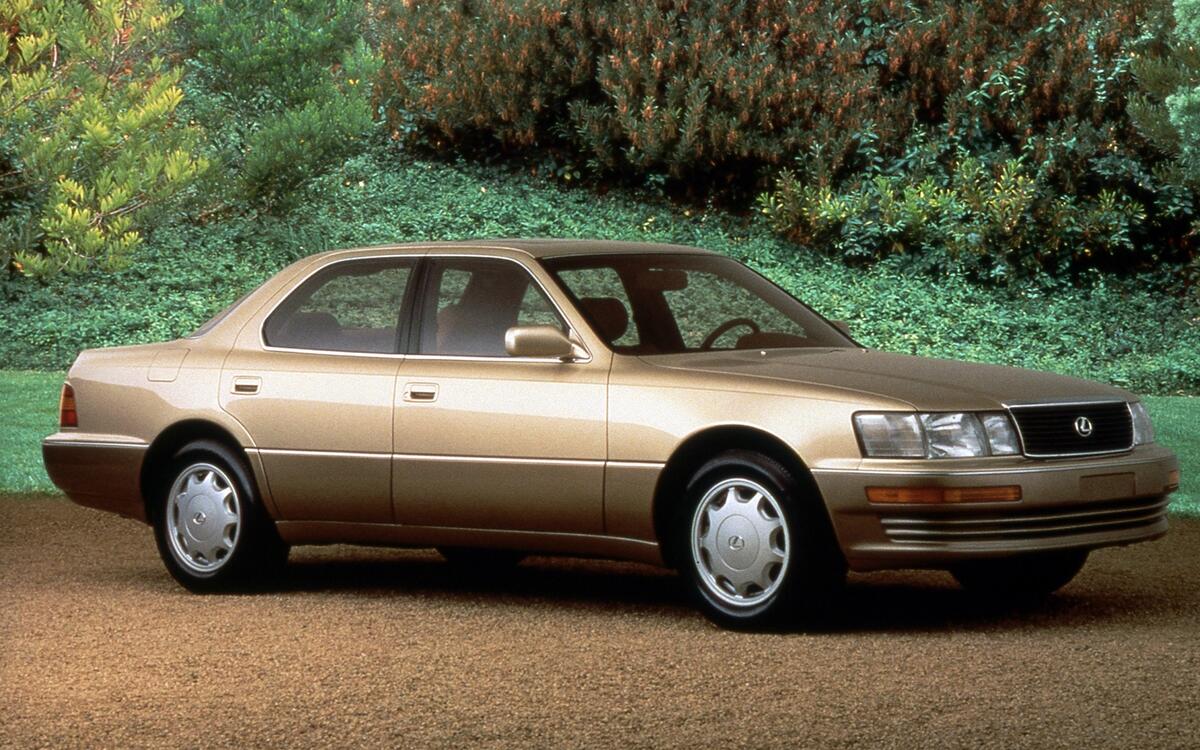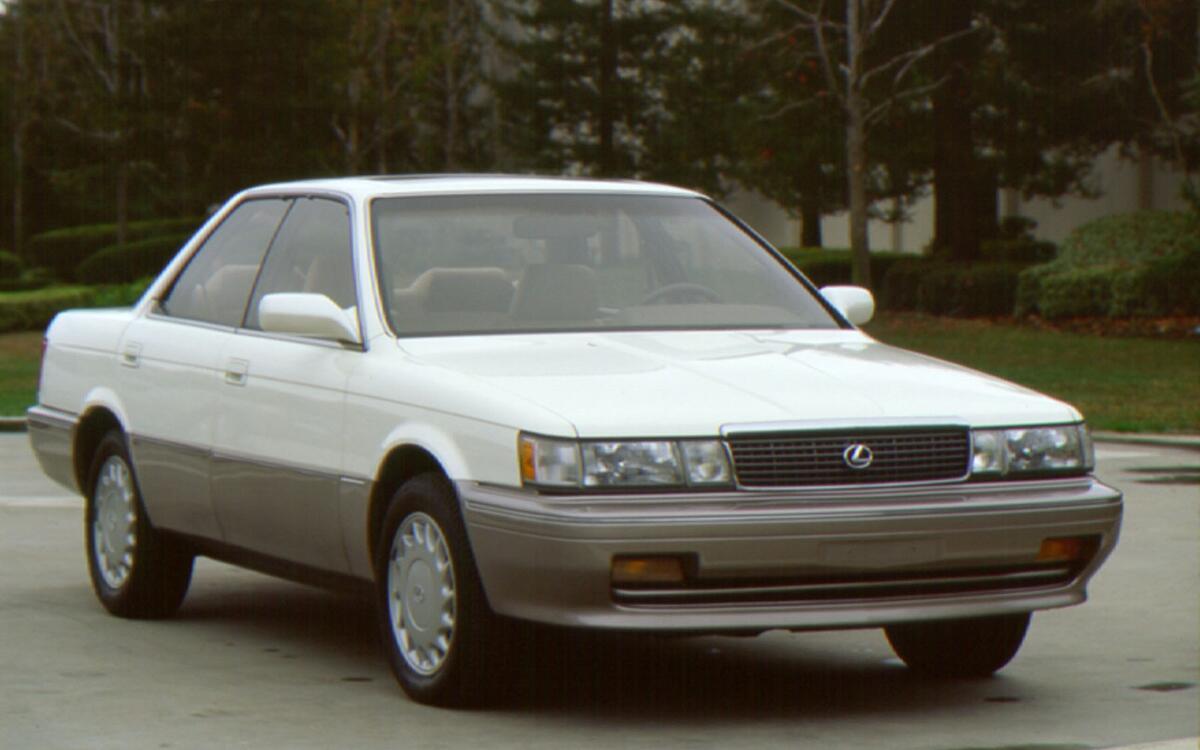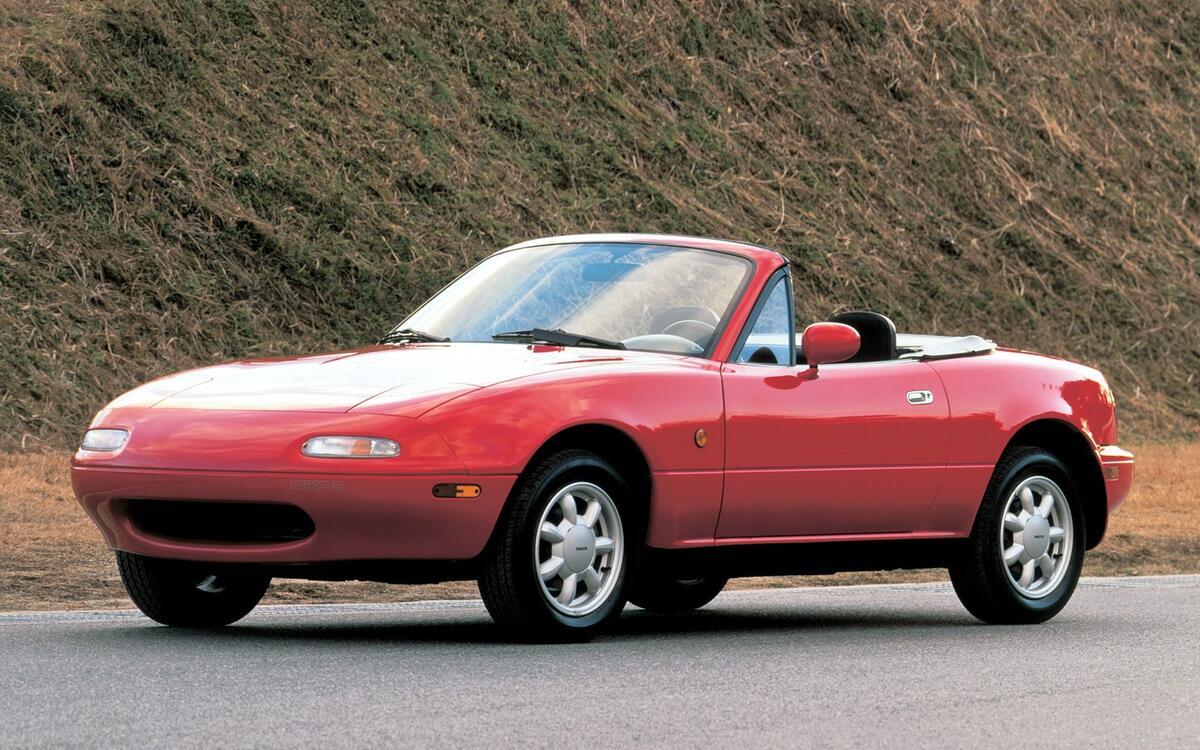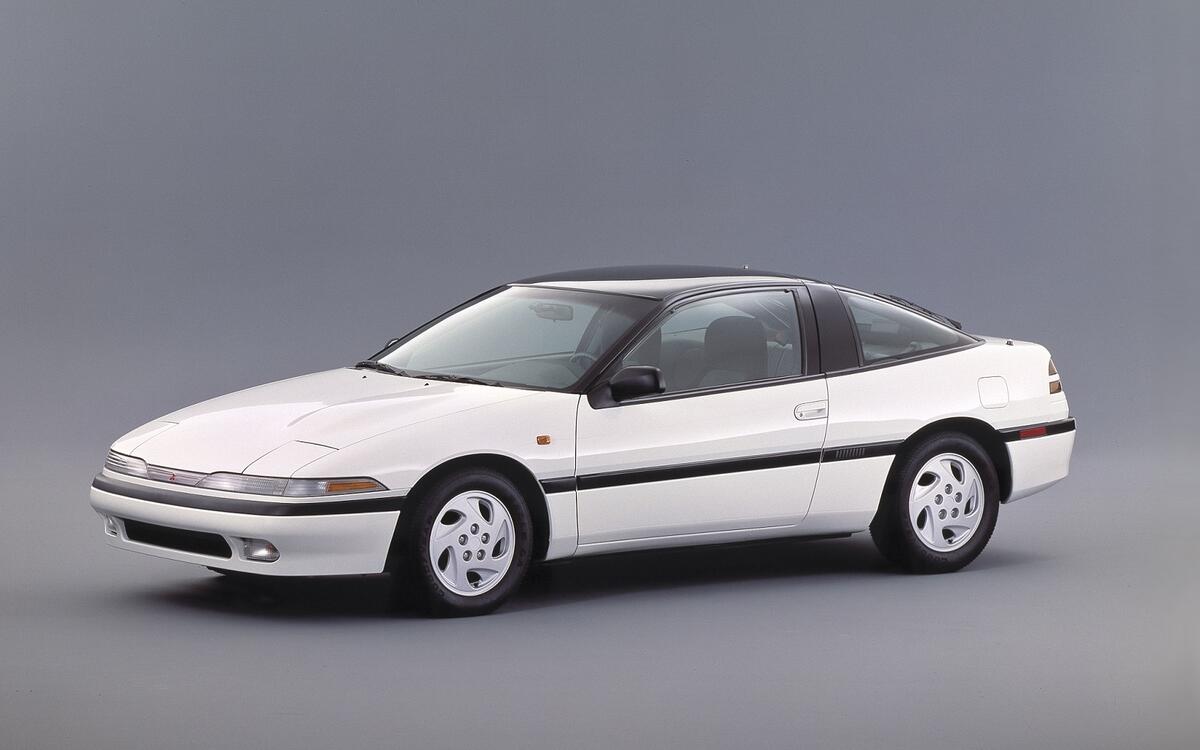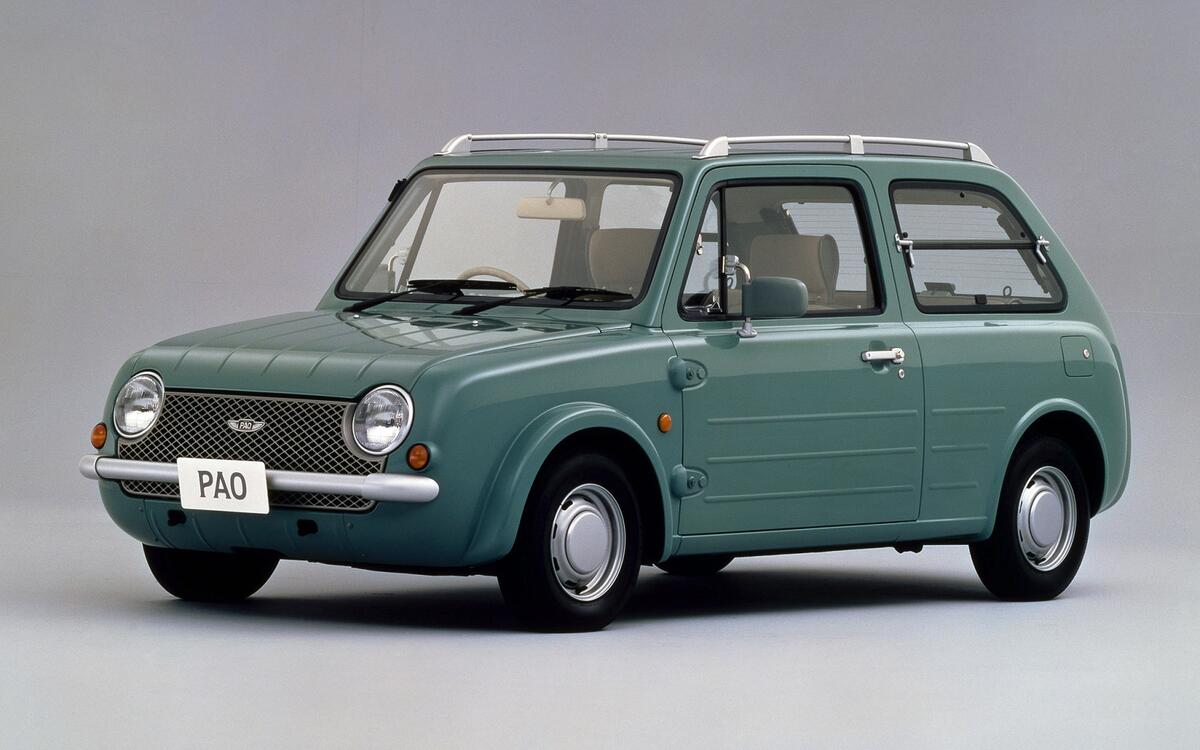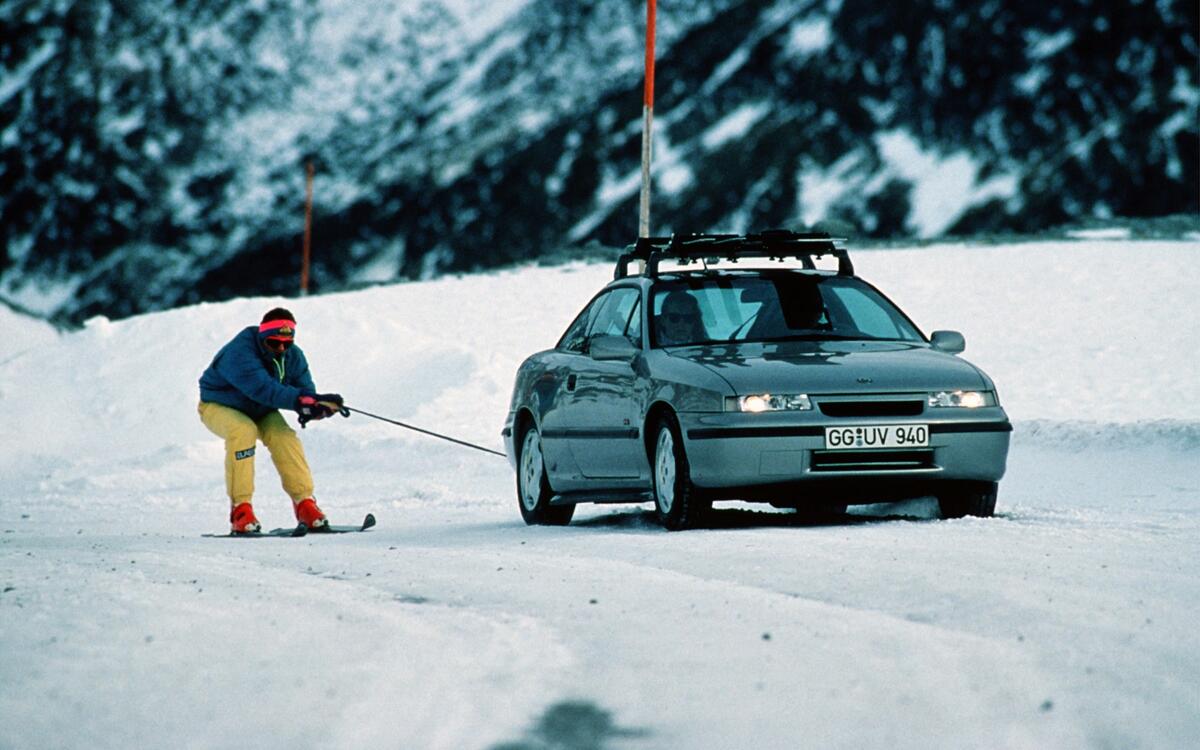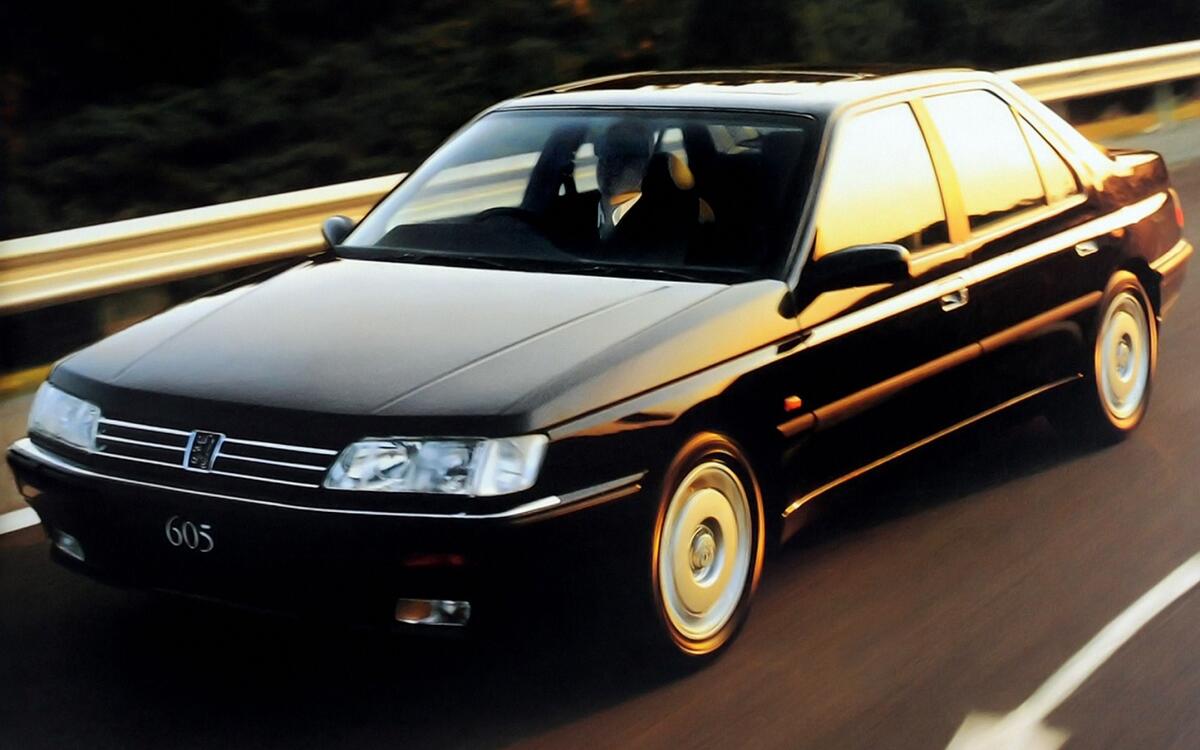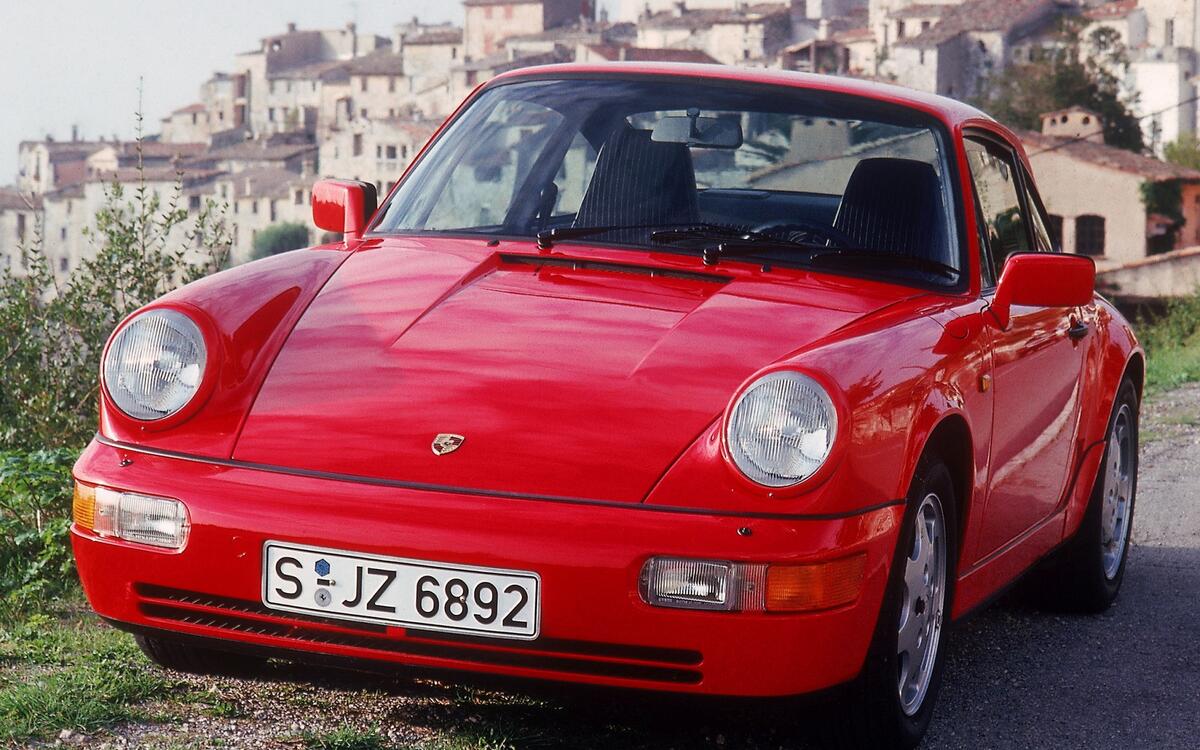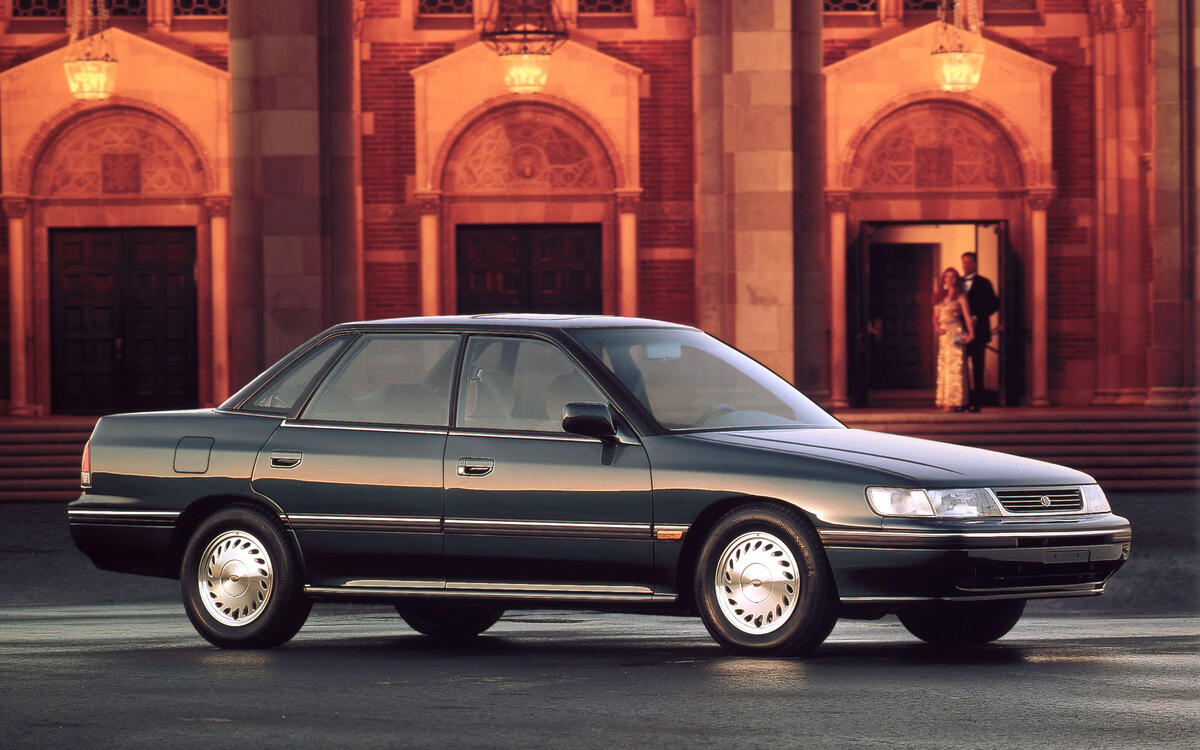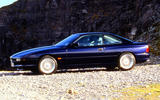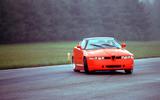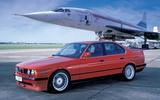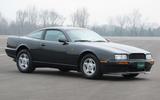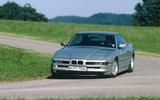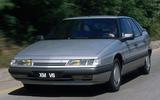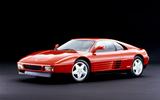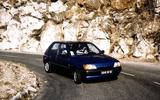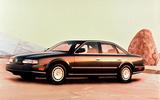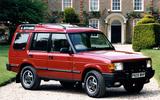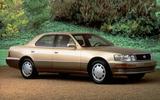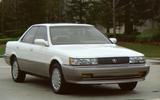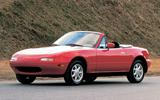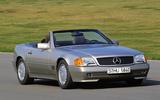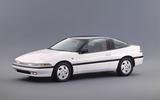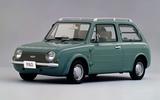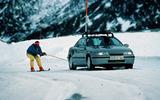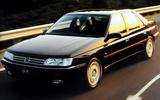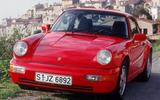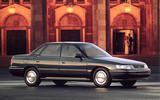 Slide of
Slide of
Printing presses worked overtime in 1989.
Major, paradigm-shifting geopolitical events like the literal and figurative fall of the Berlin Wall overshadowed a banner year in the automotive industry. As 1990 approached, stylists gradually shifted away from boxiness and once again injected curves into their designs. Performance was making a comeback thanks in part to the democratization of new, computer-based technologies like electronic fuel injection.
Cars were safer and cleaner than they had ever been and they were generally better equipped. Motorists could listen to grunge, another late-1980s phenomenon that blossomed during the 1990s, by popping a CD into their dashboard. Many of the cars introduced in 1989 accurately previewed the trends that influenced the automotive industry during the 1990s. From city cars to supercars, join us as celebrate the class of 1989’s 30th birthday by looking back at the highlights:
 Slide of
Slide of
Alfa Romeo SZ
Fiat, Alfa Romeo and Zagato teamed up to create a head-turning concept car named ES-30, an acronym which stood for Experimental Sportscar 3.0-liter, and presented it at the 1989 Geneva auto show. Many assumed it was a future-less design study created solely for the auto show circuit. It was closely related to the 75/Milano and it represented Fiat’s attempt to re-establish Alfa Romeo, which it purchased in 1986, as a purveyor of high-performance cars. The company surprised fans and journalists alike when it announced the ES-30 was headed for production as the SZ, a name already used on a successful race car around the turn of the 1960s.
Nicknamed il mostro (“the monster” in Italian), the SZ shared no styling cues with other members of the Alfa Romeo portfolio. However, looking under the engine bay revealed the familiar, 3.0-liter V6 tuned to send 210hp to the rear wheels through a five-speed transaxle. This layout created a superbly-balanced coupe.
Historians disagree about how many examples of the SZ were made in Zagato’s Milan workshop but most estimates hover around 1000 units, a figure that makes it one of the rarest Alfa Romeo models from the post-Fiat era. The open-top RZ unveiled at the 1992 Paris auto show is even rarer; only 278 units were made in 1992 and 1993.
 Slide of
Slide of
Alpina B10 Bi-Turbo
Respected BMW tuner Alpina introduced the E34-based B10 Bi-Turbo at the 1989 Geneva auto show, a year after the second-generation M5 made its global debut. Stealing the spotlight from the Munich-based firm was easier said than done, especially considering the original M5’s popularity, but Alpina was up to the challenge.
While the B10 and the M5 looked like variations of the same car, Alpina’s take on the E34 received a 3.4-liter straight-six engine twin-turbocharged to 360hp and 384lb ft of torque. In comparison, early examples of the second-generation M5 used a different, naturally-aspirated six tuned to 315hp and 265lb ft of torque. No one could ignore the power gap between the two models.
Alpina serenaded enthusiasts with tales of the B10’s 180-plus-mph top speed, a figure only matched by poster-worthy supercars like the Ferrari Testarossa and the Lamborghini Countach. 507 motorists chose the B10 over the M5 between 1989 and 1994.
 Slide of
Slide of
Aston Martin Virage
The Aston Martin Virage had big shoes to fill. Its predecessor, the V8, had been part of the company’s line-up in various forms since 1969. It had come to represent exactly what buyers expected from Aston Martin: power and prestige with an unmistakably British twist. The Virage built on these attributes with a more up-to-date design and a 5.3-liter, 330hp V8.
About 1000 examples of the Virage were built largely by hand between 1989 and 2000. That number includes coupe, convertible and shooting brake variants plus high-performance off-shoots like the twin-supercharged, 604hp Vantage Le Mans Aston made 40 examples of in 1999.
 Slide of
Slide of
BMW 8 Series
The original BMW 8 Series picked up where the first-generation 6 Series left off but it wasn’t a direct replacement for the model. It arrived as a bigger, more powerful and more expensive coupe developed with a far greater emphasis on luxury. While the 6 was available only with a straight-six, the 8 was offered either with a V8 or a V12 engine. All told, it was a completely different take on the concept of a quick, upmarket BMW coupe.
Presented at the 1989 Frankfurt auto show, the 8 Series remained part of the BMW portfolio until 1999. About 30,000 examples were made during that time. BMW experimented with several variants that never reached production, including a V12-powered M8 with at least 600hp on tap and a convertible deemed too expensive and not dynamic enough to produce. An evolution of the M8’s engine later powered the McLaren F1, however.
History repeats itself in Munich. BMW resurrected the 8 Series nameplate in 2018 to replace the 6 Series. This time, a 600hp M8 became available mere months after the model’s introduction.
 Slide of
Slide of
Citroën XM
The entire automotive industry sat up and listened carefully when Citroën announced a new range-topping model in May 1989. The Bertone-styled XM was developed to finally replace the CX, which had been on sale since 1974, and it was engineered to be as cutting-edge as possible.
Its sharp, swept-back design made it one of the most aerodynamic cars on the market. It inaugurated a new, electronically-controlled version of Citroën’s hydropneumatic suspension and the firm silenced the critics who called the CX underpowered by making a 165hp, 3.0-liter V6 available. Some variants even received a 13th window to keep wind out of the cabin if the hatch was left open.
Early XMs experienced a diverse variety of electronic and mechanical problems; one former owner described his experience to Autocar as apocalyptic. Citroën solved a majority of them by 1992 but the damage to the car’s reputation was already done and sales suffered accordingly. Those who overlooked it missed out on one of the most comfortable long-distance cruisers available during the 1990s.
Citroën made approximately 333,000 examples of the XM between 1989 and 2000. It was markedly less popular than its predecessors; DS and CX production totaled about 1,455,000 and 1,170,000 units, respectively. Its successor, the C6, proved even less popular.
 Slide of
Slide of
Ferrari 348
The Pininfarina-designed 348 became the new entry point into the Ferrari line-up when it made its debut at the 1989 Frankfurt auto show. While its predecessor, the 328, was a careful evolution of the earlier 308, the 348 arrived as a new car with an up-to-date design reminiscent of the Testarossa and a naturally-aspirated, 300hp 3.4-liter V8 mounted directly behind the passenger compartment.
The 348 was available in two flavors called tb (coupe; pictured) and ts (targa) when it went on sale. The Spider drop-top developed largely for motorists in the sunny parts of the United States arrived in 1993. Ferrari made about 8700 examples of all three 348 variants between 1989 and 1994, when the model passed the torch to the 355.
 Slide of
Slide of
Ford Fiesta (third-generation)
While it failed to catch on in the United States, the Fiesta remained one of Ford’s most important models in key markets like Europe, where it regularly led the sales charts during the 1980s. The third-generation model was introduced in late 1988 and went on sale in early 1989. Buyers could tell it was new right off the bat because it looked much more up-to-date than its predecessor and it was available as a four-door for the first time.
Ford also made it safer and more sure-footed than the outgoing model by making features like ABS brakes available on many trim levels. It took Ford less than two years to sell one million units of the third-generation Fiesta.
 Slide of
Slide of
Infiniti Q45
Over-engineered in the best possible way, the Q45 was positioned at the very top of the Infiniti line-up when the brand made its debut in 1989. It was related to the Nissan President under the sheet metal but it received a brand-specific design characterized by a controversial grille-less front end. Inside, passengers traveled in the lap of luxury. Infiniti went to significant lengths to make the Q45 as posh and comfortable as possible. Making a positive first impression was important; the Q45 spoke for the entire Infiniti line.
Rear-wheel drive and a 278hp, 4.5-liter V8 engine came standard; the Q45 was a big car that weighed more than 1800kg (4000lb) yet it took 6.7sec to reach 60mph from a stop. The optional four-wheel steering system made it feel smaller than its specifications sheet suggested.
Infiniti sold the Q45 in the United States – its initial target market – and in Australia but the model wasn’t available in Europe. The second-generation Q45 made its debut in 1996.
 Slide of
Slide of
Land Rover Discovery
Pushing the Range Rover upmarket created a void in the Land Rover line-up. The British firm filled it by introducing the original Discovery in 1989. Originally offered only with two doors, it was positioned as a more comfortable alternative to the Defender that was nonetheless exceptionally capable off-road. The line-up grew with a four-door model in 1990 and the Discovery quickly became Land Rover’s best-seller.
It was relatively cheap to build, too, because it borrowed dozens of components from the Austin Rover parts bin. Land Rover made approximately 353,000 examples of the original Discovery between 1989 and 1998. The second-generation model – which looked nearly identical to its predecessor – arrived in 1998.
 Slide of
Slide of
Lexus LS
In 1983, Toyota assembled its brightest engineers and asked them to secretly develop a flagship model capable of dethroning Mercedes-Benz from the top of the luxury sales charts. Working with an unlimited budget, the group spent the next six years designing the original Lexus LS unveiled at the 1989 Detroit auto show.
The LS should have gone on sale under the Toyota banner. Executives decided to create a new brand when market research revealed buyers in America – a key market for the car – wouldn’t spend Mercedes money on a Toyota. The V8-powered, 250hp LS was a hit; it forced Mercedes to completely rethink its line-up during the 1990s and embark on a drastic cost-cutting campaign to remain competitive. Cars like the W140-generation S-Class and the W210-generation E-Class were built to a price point and it was often the one set by Lexus.
Beating Mercedes sounded impossible but Lexus pulled it off. In 2001, 12 years after its introduction, it became the best-selling luxury brand in the United States.
 Slide of
Slide of
Lexus ES
The Lexus ES made its debut alongside the bigger, more expensive LS at the 1989 Detroit auto show. While the LS was new from the ground up, the ES arrived as a gussied-up second-generation Toyota Camry with a more upmarket exterior design and a nicer interior. It nonetheless played a significant role in helping Lexus gain a secure foothold in the United States by giving consumers a relatively affordable entry point into the brand.
Without it, Lexus would have remained a single-model brand for the first few years of its existence and earning a reputation would have been considerably more difficult.
 Slide of
Slide of
Mazda MX-5 Miata
The Mazda MX-5 Miata’s success story began at the 1989 Chicago auto show. It was the product of a long development process during which engineers experimented with several powertrain layouts and many different designs. It could have arrived with front-wheel drive, built on one of the firm's existing platforms, or as a mid-engined roadster similar to the Toyota MR2.
Instead, Mazda chose to follow the recipe that made British and Italian roadsters like the MG B and the Alfa Romeo Spider hugely popular in the United States from the 1960s to the 1980s. The Miata took the form of a compact, lightweight roadster with rear-wheel drive and no equipment deemed superfluous.
It arrived at precisely the right time, too: British roadsters were fast disappearing from American roads and the Italians had let their convertibles wither on the vine for far too long. The Miata immediately became the industry's darling. In May 2000, Guinness crowned it the best-selling two-seater sports car ever after Mazda built the 531,980th example. The millionth Miata – a fourth-generation model – rolled off the production line in April 2016.
 Slide of
Slide of
Mercedes-Benz SL (R129)
For a long while, it looked like Mercedes-Benz either didn’t want to replace the R107-generation SL or didn’t know how. Its 18-year career finally ended when the R129-generation SL broke cover during the 1989 Geneva auto show. Built on a modified W124 platform, it stood out as one of the most technologically-advanced roadsters on the market. Mercedes notably fitted it with a roll bar that extended automatically in a fraction of a second if the car detected it was rolling over.
While the R129-generation SL shared much with the W124 under the sheet metal, most of its engines came from the S-Class. The 600 SL flagship released in 1992 notably became the first SL offered with a V12 engine. The unit in question was a 6.0-liter rated at 389hp.
The most powerful R129 variant was the AMG-developed SL 73 unveiled in 1997. It was released when Mercedes nameplates were pegged to engine displacement, so it was gifted with a mighty, 7.3-liter V12 tuned to deliver 518hp. Pagani later used an evolution of the 12 to power the Zonda.
The R129 SL retired in 2001. Mercedes made approximately 213,000 examples of it.
 Slide of
Slide of
Mitsubishi Eclipse
The image of Japanese automakers improved dramatically during the 1980s. By the end of the decade, they had earned the credibility to make luxury cars and enthusiast-approved sports cars. It’s the second group that Mitsubishi aimed for when it released the original Eclipse in 1989. With pop-up headlights and a rounded design characterized by a vast greenhouse, it was hailed as the quintessential 1990s Japanese coupe by thrill-seeking drivers and tuners alike.
The Eclipse was the poster child of a growing segment of coupes – most of them Japanese – that delivered reasonably impressive performance at an accessible price point. The line-up ranged from a relatively basic, front-wheel drive model with 92hp from a 1.8-liter four-cylinder engine to a variant with 180hp turbo four. Mitsubishi made permanent four-wheel drive available in 1990 and released an updated Eclipse without pop-up headlights in 1992. The second-generation model arrived in 1994.
In the United States, its largest market, the original Mitsubishi Eclipse was also sold as the Eagle Talon and the Plymouth Laser via a partnership with Chrysler. The Normal, Illinois, factory that manufactured all three models closed in 2015. It was purchased two years later by electric off-roader start-up Rivian and the firm is on track to begin manufacturing two models called R1T and R1S, respectively, in 2020.
 Slide of
Slide of
Nissan Pao
Nissan announced the retro-styled Pao, one of its so-called Pike cars, during the 1987 Tokyo auto show. Visually, it looked like a well-balanced blend of styling cues borrowed from the Austin Mini, the Citroën 2CV, the Renault 4 and the Fiat 500. And yet, it had its own personality; it wasn’t a carbon copy of the cars that influenced it. The body panels – some of which were made using composite materials – hid mechanical components borrowed from the first-generation Micra.
Nissan didn’t want to add the Pao to its line-up as a regular-production model because it hoped to maintain a certain degree of exclusivity. It knew demand would easily outpace supply so it chose not to make it a limited-edition model, either. Instead, it announced it would take orders for the model between January and April of 1989 and build the exact number of cars reserved during that three-month window. It spent the next year and a half manufacturing and delivering the 51,657 units it received deposits for.
 Slide of
Slide of
Vauxhall/Opel Calibra
Japanese coupes posed a serious threat to Opel’s market share during the 1980s. The company fired back by releasing the Calibra at the 1989 Frankfurt motor show. While its predecessor, the second-generation Manta, was rear-wheel drive, the Calibra arrived with front-wheel drive because it was based on the four-door Vectra. Four-wheel drive became available in 1990 and Opel added a 170hp V6 to the line-up in 1993. The most desirable variant was the Turbo 4x4, which teamed a 204hp turbocharged, 2.0-liter four-cylinder with the four-wheel drive system available on less powerful variants.
As an affordable sports car from a mainstream brand, the Calibra competed in a segment of the market which has shrunk into oblivion as of 2019. Its main rivals included different variants of the Subaru SVX, the Mitsubishi Eclipse, the Toyota Celica and the Volkswagen Corrado, among others.
Opel made about 238,000 examples of the Calibra between 1989 and 1997. General Motors sold the Calibra around the world. It was a Vauxhall in the United Kingdom, a Holden in Australia and a Chevrolet in Brazil. It retired without a direct successor.
 Slide of
Slide of
Peugeot 605
Peugeot sought to leverage the benefits of economies of scale when it decided to build the 605, its long-awaited flagship for the 1990s, on the same platform as the Citroën XM. Both cars shared many components under the sheet metal but Peugeot decided not to use Citroën’s hydropneumatic suspension. The 605 targeted a clientele seeking a model with a high degree of classicism while the XM was aimed at buyers looking for something more avant-garde in terms of design and technology.
Common roots led to common problems. Peugeot fixed them quickly, too, but they contributed to the 605’s lackluster career. Its fate was largely undeserved; designed with input from Pininfarina, the 605 was an elegant four-door that still stands out as one of Peugeot’s best road cars. Production ended in 1999 after Peugeot made nearly 255,000 examples of the 605.
 Slide of
Slide of
Porsche 964
By the end of the 1980s, the Porsche 911 looked like an exotic anachronism because it hadn’t received significant updates since 1973. The Stuttgart-based firm needed to do something; it was in dire financial straits and many believed it wouldn’t be around by the end of the 1990s. As it prepared the 989, a high-performance four-door model which never reached production, it made changes to the 911 that were deep enough to warrant a new internal designation: 964.
The 964 still looked like a 911, there were no surprises there, but it offered a more comfortable cabin and a completely redesigned suspension, among other significant improvements. Porsche rubbed some purists the wrong way by offering four-wheel drive for the first time but at least its engine remained air-cooled.
Porsche’s evolutionary approach to updating the 911 paid off; about 62,000 examples were sold between 1989 and 1994, when it was replaced by the 993-generation 911.
 Slide of
Slide of
Subaru Legacy
Introduced in 1989, the Legacy was Subaru’s first true attempt at taking on bigger Japanese automakers like Honda and Toyota in the mid-size car segment. It was aimed right at the Accord and the Camry, among other popular models, and it promised to deliver reliable, worry-free and comfortable motoring with the added bonus of Subaru’s time-tested all-wheel drive system.
The original Legacy took Subaru further upmarket than any family car before it and helped the automaker merge into the mainstream. Buyers didn't need to be quirky, outdoorsy or both to consider a Legacy; it was a normal car for normal people. At the top end of the spectrum, the turbocharged RS variant paved the way for the Impreza’s rally victories during the 1990s.
In 2019, the seventh-generation Legacy represents little more than a footnote on Subaru’s annual sales chart. However, it spawned the Outback, which remains one of the company’s most popular models.
We feature the stars of '89, with some establishing fabled nameplates that live on to this day
Advertisement


